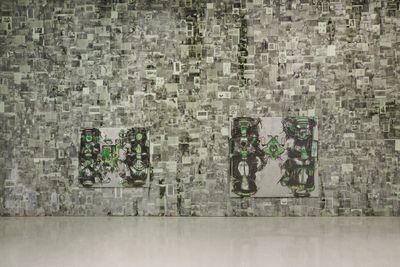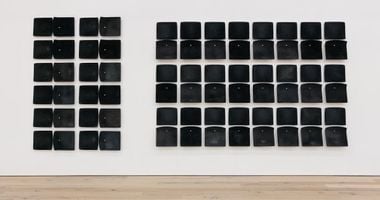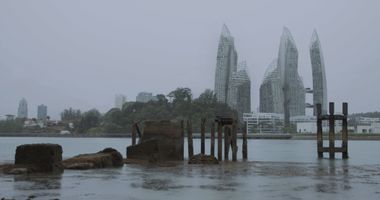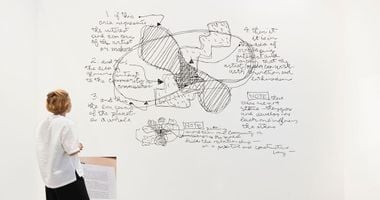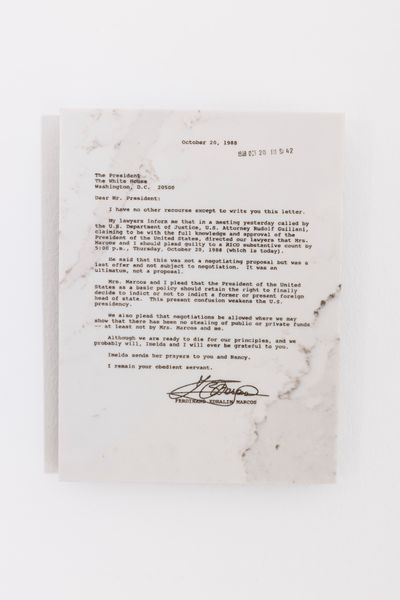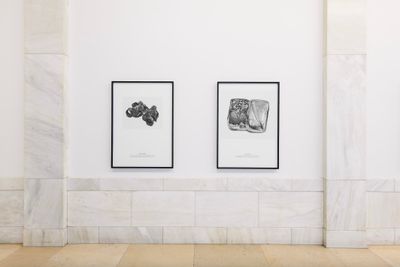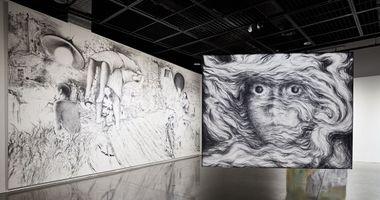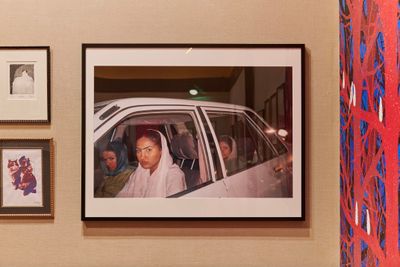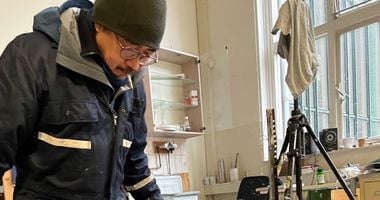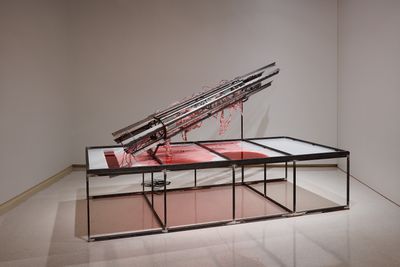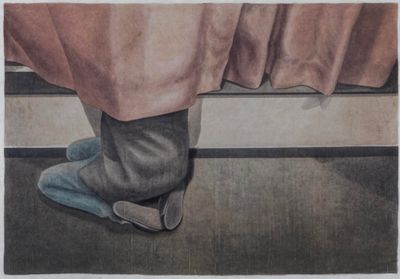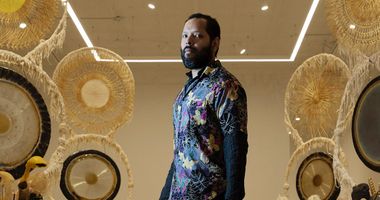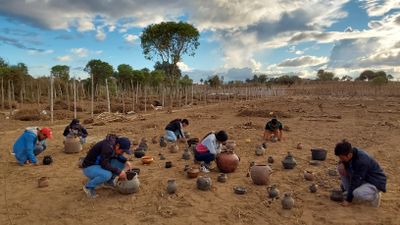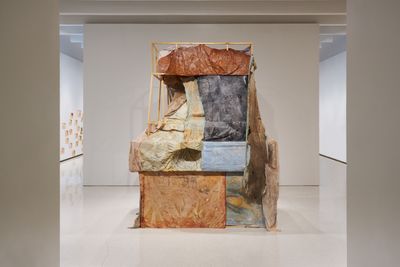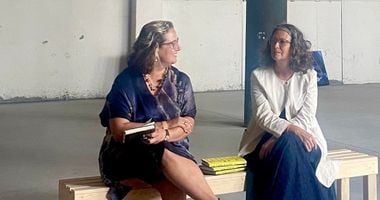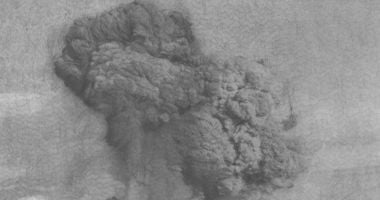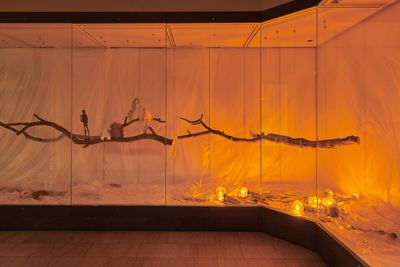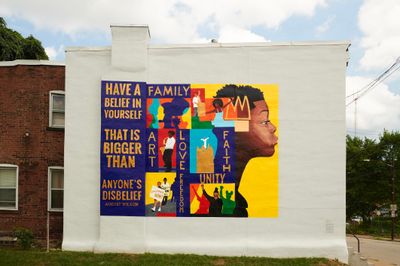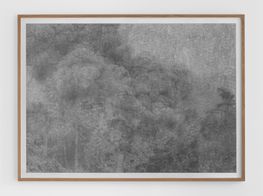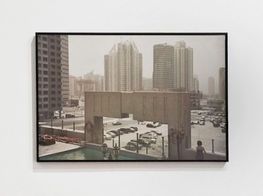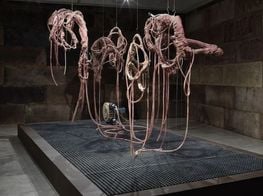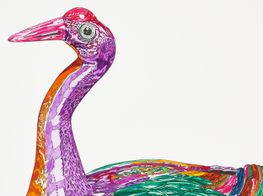The 58th Carnegie International Overwhelms, as it Intends
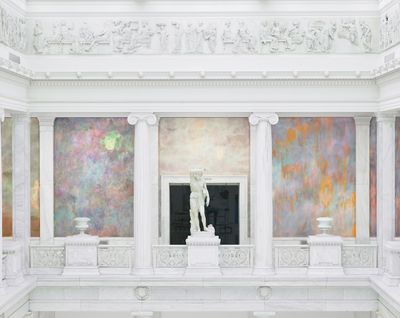
Thu Van Tran, Colors of Grey (2022). Exhibition view: Is it morning for you yet?, 58th Carnegie International, Pittsburgh (24 September 2022–2 April 2023). Courtesy the artist and Carnegie Museum of Art. Photo: Sean Eaton.
How do you present an international exhibition that brings together artworks that collectively respond to over 77 years of U.S. hegemonic history? And more to the point, without overwhelming viewers?
While there is no singular path to resolve such questions, the 58th Carnegie International (24 September 2022–2 April 2023) in Pittsburgh sets out to follow 'the geopolitical imprint of the United States since 1945 to situate the "international" within a local context'.
Under this broad framework, viewers are asked to find their way through a show that is heavy on new and existing works from both established and emerging artists, but light on overt curatorial guidance.
With Carnegie, there are enough moments along the way when the gamble pays off.
Once you accept this open-ended arrangement as a challenge—and maybe even learn to invite it in—the exhibition becomes a delightful menagerie of art that offers something for everyone.
The exhibition's title, Is it morning for you yet?, is an expression in the Mayan Kaqchikel language that acknowledges how our lives are shaped by different time zones and clocks, leading to different experiences. With this invocation, the curatorial posits a discernible through-line: whether through individual or communal lenses, cultures, positionalities, grievances, and agendas—we live in a world of shared differences.
Curated by Sohrab Mohebbi, along with Associate Curator Ryan Inouye and Curatorial Assistant Talia Heiman, the exhibition includes works by over 100 artists and collectives working across mediums to present 'an ensemble of erratic, cunning, unruly, disobedient' attitudes and gestures.
It feels more manageable to tackle the expansive show one gallery at a time, letting the bigger thematic and conceptual stories act as a muted backdrop.
In an upper gallery section titled Refractions, works are organised chronologically, showing historical and ongoing disruptions brought about by U.S. global ascendancy. I found it interesting to start at the far end of the gallery and work back to the cataclysm of 1945, so to speak.
Starting in the 1980s, Denzil Forrester's Nutmeg Trail (2021) is a painting showing the Marxist revolutionary and Grenada's former prime minister Maurice Bishop, surrounded by adoring figures. Rendered in a light palette, the visual choreography is reminiscent of anti-imperialist messages coded within dancehall and reggae traditions, recalling regional and cultural resistance to the U.S. invasion of Grenada in 1983.
Engraved in marble, Pio Abad's 'Thoughtful Gifts' (2019–ongoing) comprises official correspondences between the Philippines' Marcos family and high-level U.S. government leaders, detailing ways to assist the Marcos' to evade prosecution. The hard-to-decipher texts draw viewers into the near-invisible machinations of power.
Blink for too long in this gallery and you may miss Final thoughts on 10 Years of A Message to the Grassroots (1998), a video recording of the final episode of Black U.S. activist Michael Zinzun's cable-television talk show Message to the Grassroots (1988–1998). The television series demonstrated how activist groups sought to raise awareness of U.S. domination and the linkages between local and international struggles.
At the other end of the gallery, Hiromi Tsuchida's (School Uniform) (1982–2022) comprises an inkjet print of a torn and charred jacket from the U.S. nuclear bombing of Hiroshima—an ominous reminder in the face of renewed talk of nuclear war within the ongoing war in Ukraine.
As a denouement to this chronology of events, an imaginary map titled Uprooted People of the U.S.A. (1945), by Harlem Renaissance artist and cartographer Louise E. Jefferson, charts the movement of people across the United States for both forced and voluntary purposes, visually reinforcing a starting point to the geopolitical reverberations that follow.
In an adjacent gallery, a presentation by the art collective Hyphen shows works by several Indonesian artists, including oil paintings by Kustiyah. Characterised by consistent green and red palettes, Torso (1960) and Potret Diri (Self Portrait) (1979) attest to the subordinated presence of women during the tumultuous and patriarchal Sukarno and Suharto eras.
In a separate space, the exhibition makes clear—almost to a reductive degree—that the U.S. imperial project guided by free-market capitalism has impacted our lives on personal and planetary levels. Accordingly, Soun-Gui Kim's multimedia installation, Stock Garden (2022), juxtaposes video footage taken from food markets across Asia with real-time information feeds from global stock markets. The images project onto viewers and a living plant nearby, reflecting our immersion within U.S.-driven capitalist imperatives.
Responding to collective experiences with pain, Mire Lee's Untitled (My Pittsburgh Sculpture) (2022) shows a pump-driven steel-and-glass decagonal form, mulching and squeezing viscous and flexible matter into a blood-like liquid. Lee's installation suggests—however uncomfortably—that there may be value in thinking about how we respond to the ugly and difficult undersides of a technologically driven world.
Staying with the psychological impacts of our contemporary world, Yooyun Yang's painting Beholder (2019) shows a solitary figure sitting on the floor. Their face is buried in drapes, leaving us to think about the personal, and oftentimes hidden impacts of macropolitical events.
Cultural responses to the threat of colonial intrusions are taken up beautifully in Édgar Calel's installation Oyonïk (The calling) (2022). Referencing a Mayan Kaqchikel healing ritual of the same name, clay pots filled with water, rose petals, and tree branches call on the sky and earth to return the spirits of those who are lost.
Similarly, Sanaa Gateja's colourful paper bead and bark-cloth painting Seeds of Joy (2022) conveys a will to recycle found materials and respond to collective concerns and desires. Both works create space to ponder how to heal and affirm ourselves in the face of colonising forces.
How devastating events can reshape the land is hauntingly addressed in Dia al-Azzawi's resin-based sculpture Ruins of Two Cities: Mosul and Aleppo (2019–2021). The work simulates an aerial view that reveals how indiscriminate bombing and ceaseless attempts to subdue geopolitical adversaries levelled ancient cities in Iraq and Syria, regardless of the cost to human lives and cultural treasures.
Dala Nasser's installation, Tomb of King Hiram (2022), is a four-metre tall structure that recalls the ancient palace of King David and King Solomon's Temple. Made of draped canvases that have been soaked, rubbed, and dyed with materials from southern Lebanon, Nasser's work draws attention to the toxicity of political and environmental violence.
Of course, the Carnegie Museum of Art itself, named after Andrew Carnegie—a man whose enormous wealth came from the steel that contributed to America's industrial expansion in the 19th century—offers an intriguing exhibition space ready-made for provocative juxtapositions.
What we lose in our inability to comprehend the exhibition overall, we gain by allowing our meandering curiosities to have their way.
Suspended from the ceiling of one great hall is right? (2022), Banu Cennetoğlu's golden balloon sculptures comprising letters from ten articles of the Universal Declaration of Human Rights. The balloons will deflate over the exhibition's run, leaving viewers to ponder the viability of its legislation.
In another striking interaction, Thu Van Tran's Colors of Grey (2022) shows how histories of genocide can be overlooked in our everyday movement within spaces like museums. Tran's colour frescos in the Hall of Sculpture call attention to the Rainbow Herbicides—the most famous being Agent Orange—that the U.S. military deployed to devastating effect during the Vietnam War (1954–1975).
In a welcomed departure from the overtly political, Patricia Belli's surreal installation, Stories from my dead (2022), uses wire, fabric, and bone puppets to present a family history based on her late mother's memories, voiced by friends and family members. Belli's work reveals that larger impositions surrounding the installation are often memorialised and worked out in the family narratives we share.
Moving outside the museum, Pittsburgh native James 'Yaya' Hough's mural, A Gift to the Hill District (2021–2022), brings the curatorial into its local context. Hough, who lives in the neighbourhood, created the mural which shows a person's face in profile accompanied by uplifting statements gathered through a community-based participatory process.
For a major art exhibition to adopt a non-disciplinary, decategorised approach is a risky endeavour. If pushed too far, the absence of signposts could frustrate viewers, as they help process huge amounts of work.
With Carnegie International, there are enough moments along the way when the gamble pays off; discovering the work of an artist for the first time for instance, or chancing upon a collection from an overlooked region. What we lose in our inability to comprehend the exhibition overall, we gain by allowing our meandering curiosities to have their way. —[O]

